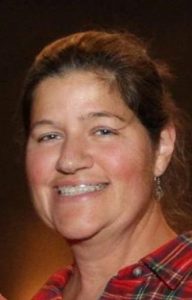MEDEX Northwest Students Ready for Full Day of Buprenorphine Training
Students from across all five of MEDEX Northwest’s campuses will participate in a full-day Buprenorphine training in the treatment of opioid use disorder (OUD) in preparation for their primary care clinical rotations: MEDEX Kona (April 14), MEDEX Anchorage (April 21), MEDEX Spokane (May 12), MEDEX Tacoma (May 25), and finally MEDEX Seattle (May 26).
The trainings will will be led by project co-leaders Pamela Pentin, MD, JD, FAAFP, an Associate Professor of Family Medicine, UW School of Medicine in Seattle, WA, and Krissa Orlowski, PA-C, DMSc, a MEDEX Northwest faculty member with the MEDEX Tacoma, WA campus.
Drs. Pentin and Orlowski are teamed up and on a mission to provide MEDEX PAs and primary care providers with the awareness and confidence to employ an important tool in the effective treatment of opioid use disorder: the drug known as Buprenorphine.

“Primary care providers know their patients best,” notes Dr. Pentin. “MDs, NPs, PAs, you name it, primary care providers are uniquely situated to treat people with OUD as a natural part of what we already do. We treat tobacco and alcohol addictions all day every day, so how is treating opioid addiction with Buprenorphine any different?”
The need for treating opioid addiction is stark. Some 100,000 Americans died of a drug overdose in 2022, most involving opioids like oxycodone, heroin, and fentanyl. According to the Centers for Disease Control, this is an “epidemic of overdose” with deaths having quintupled over 20 years. And the social isolation and painful economic impacts of the COVID-19 pandemic have made the opioid epidemic worse, not better.
In the eyes of medical providers such as Pentin, Orlowski and others, the tragic fact in all of this is that clinicians have had a safe and effective way of treating opioid addiction available to them since 2002: Buprenorphine.
“Buprenorphine is a safe, synthetic opioid replacement drug available by prescription,” explains Orlowski. “It’s dispensed by community pharmacies and taken by patients under the tongue. It allows individuals to achieve sobriety where methadone clinics and hospital-based addiction services don’t exist.”
And yet the drug has remained under-prescribed and under-utilized for the past two decades, Orlowski explains, primarily due to stigma.

“Even where addiction services are available, the stigma of treatment often keeps people away and stuck in the spiral of their addiction. Imagine having to walk into a methadone clinic every day to face your addiction and to get your dose of medicine, just to get through the day.”
Just as importantly, the stigma also reaches into the offices and practices of clinics and hospitals. Clinicians are often unwilling to prescribe Buprenorphine for addiction for their patients. Indeed, less than 10% of physicians, physician assistants and nurse practitioners nationwide prescribe Buprenorphine for OUD. “When I started doing this 20 years ago,” recalls Pentin, “I thought it would be icky and depressing, and I steeled my nerves to do it. But it’s been truly joyful to watch patients turn their lives around and soar in sobriety. I want other providers to feel the joy OUD care can bring when they are successful in helping patients overcome this awful disease.”
Efforts to increase the numbers of Buprenorphine prescribers – which is encouraged by the U.S. Drug Enforcement Agency (DEA) as an emergency response to the pandemic’s rise in overdose deaths – have yet to yield big results. In April of 2021, the DEA lifted its requirement of special clinician training to prescribe Buprenorphine. And early in 2023, the DEA eliminated all barriers to prescribing. But still the epidemic continues, and the death tolls remain disturbingly high.
In response, local government authorities have offered clinicians incentives to increase the availability of prescribers. For example, in Seattle and King County, the Washington state Public Health Department offered a $500 honorarium to any provider who would train to become a Buprenorphine prescriber. A few did, but still, a Buprenorphine-prescribing clinician is too often the exception to the rule.
But for Drs. Pentin and Orlowski, change remains not only possible through education and training, but it’s also actually underway.
“It was decided that all of the family medicine faculty physicians at the University of Washington become Buprenorphine prescribers,” Dr. Pentin reports. “Those physicians were in turn qualified to teach Buprenorphine prescribing to their trainees. And Buprenorphine has become the norm for treating opioid use disorder at UW. Now all family physician graduates of UW Medicine complete their training knowledgeable and practiced in prescribing Buprenorphine. It’s changed the game.”
In keeping with that effort, the training team will arrive on each MEDEX campus over the next six weeks to provide initial Buprenorphine training to the entire 2024 MEDEX Northwest student cohort. Area clinical preceptors, particularly those who teach MEDEX students, are strongly encouraged to attend as well.
“It is so important for preceptors to be aware of and trained in the topic,” stresses Dr. Pentin, “in order to be the best possible teachers and leaders for our MEDEX students. We also encourage clinicians and providers of all stripes to attend. It’s an opportunity to advance their clinical knowledge on this essential topic to best treat patient populations.”
Margot Karr, BS, MSPAS, PA-C, a faculty member at the MEDEX Kona campus, the team’s first stop, concurs. “As a resident, Kona campus faculty member, and PA-C of this community, I really can’t emphasize enough the imperative for well-trained, competent and confident clinicians to be willing and able to prescribe this potentially life-saving medication for those on the islands battling opioid use disorder.”
Topics to be covered at the training include evaluating patients for safe therapy, the nuts and bolts of office-based management, pharmacology, urine drug testing, counseling as part of treatment, and recognizing when the complexity of a patient demands additional resources.
Following the training, students will continue their learning with additional online learning modules. And they will be mentored in the treatment of OUD by experienced PAs during their clinical rotations, which begin in the fall.
“The treatment of opioid use disorder is squarely within the skill set of a PA,” says Krissa Orlowski confidently, herself a PA. “PAs are well-trained to manage anxiety, depression, addiction and other behavioral health disorders. MEDEX graduates will now become part of the solution, part of a growing army of clinicians poised to take on the opioid epidemic in Hawaii, Alaska, Washington and beyond.”
# # #
News media are encouraged to attend. Primary Contact: Pamela Pentin, MD, JD, FAAFP, UW Associate Professor & Co-Leader of Buprenorphine Training, (207) 460-1757, pentip@uw.edu

